RF ablation catheters
DiamondTemp™ ablation catheter
RF ablation catheters
DiamondTemp™ ablation catheter
The DiamondTemp™ ablation catheter is an open-irrigated radiofrequency (RF) ablation catheter used for cardiac ablation to treat atrial fibrillation.
Description
As the only open-irrigated radiofrequency (RF) catheter with industrial diamonds to optimize power based on tissue surface temperature, the DiamondTemp™ ablation catheter with RealTemp™ is safe and effective, and has demonstrated procedural efficiencies compared to contact force-sensing RF.1
Features
The next generation of radiofrequency (RF) ablation
Exclusive diamond-enabled tip tooling
The 8.0 Fr ablation catheter includes industrial diamonds, enabling rapid cooling due to their high thermal diffusivity property. The catheter tip is comprised of platinum-iridium and diamond components. A network of chemical vapor deposit (CVD) industrial diamonds acts as heat-shunting material.
- Distal diamond
- Center diamond
- Proximal diamond
Exclusive diamond shunt network enables rapid catheter tip cooling and a low-flow irrigation rate of 8 mL/min.2
- Thermal energy transfer is 200 to 400 times faster with CVD diamond versus platinum-iridium.3,4
- Extremely high thermal diffusivity allows quick conduction of thermal energy through the diamond shunt network, enabling a low-flow irrigation rate and electrogram (EGM) signal clarity.2
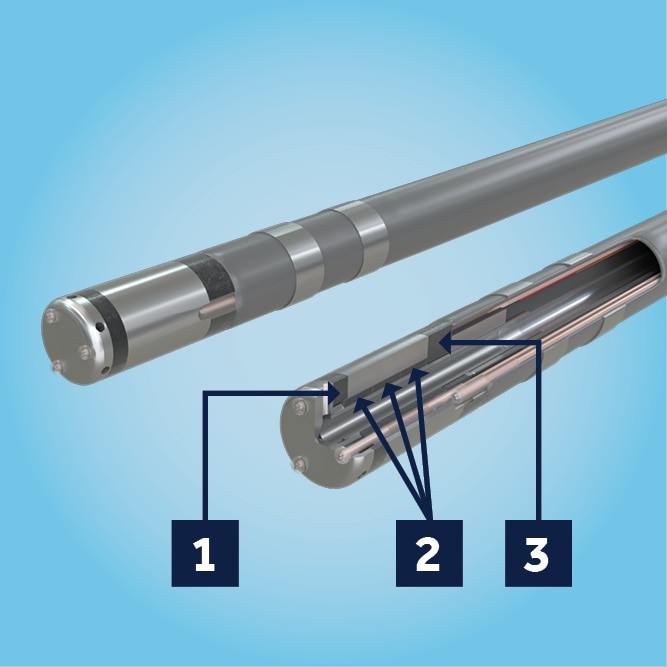
Real-time temperature-sensing technology
Temperature provides direct feedback on lesion creation. Irreversible tissue damage is created at temperatures > 50 C.5
- The DiamondTemp™ ablation catheter runs in temperature-control mode.
- RealTemp™ drives thermocouple readings by the generator 50 times per second and automatically adjusts the power to the ablation set temperature.
- A new study shows that through operation in temperature control mode, the level of applied contact force does not influence lesion size for durations between 5 to 15 seconds.6
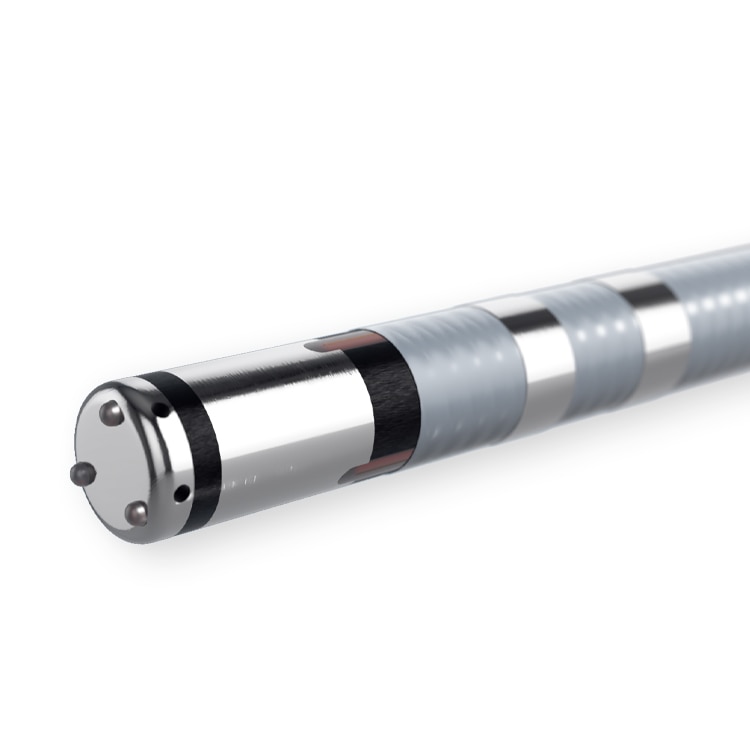
Precise location guidance with localized EGMS
A high-resolution electrode (HRE) at the catheter tip allows for the recording of highly localized signals at the center of ablation with minimal far-field artifact.2
Conventional electrodes
Bipolar mapping/pacing
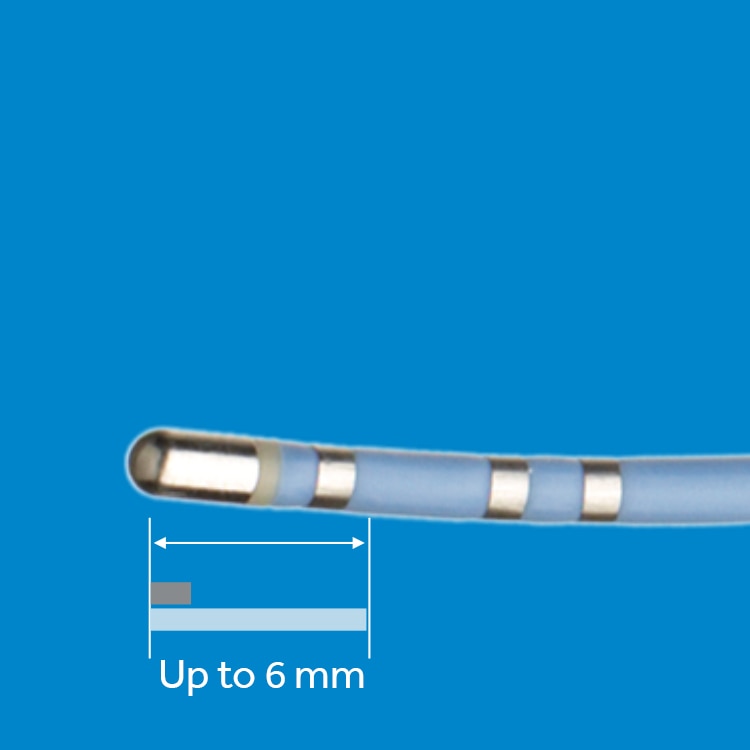
DiamondTemp™ hi-res electrodes
Bipolar mapping/pacing
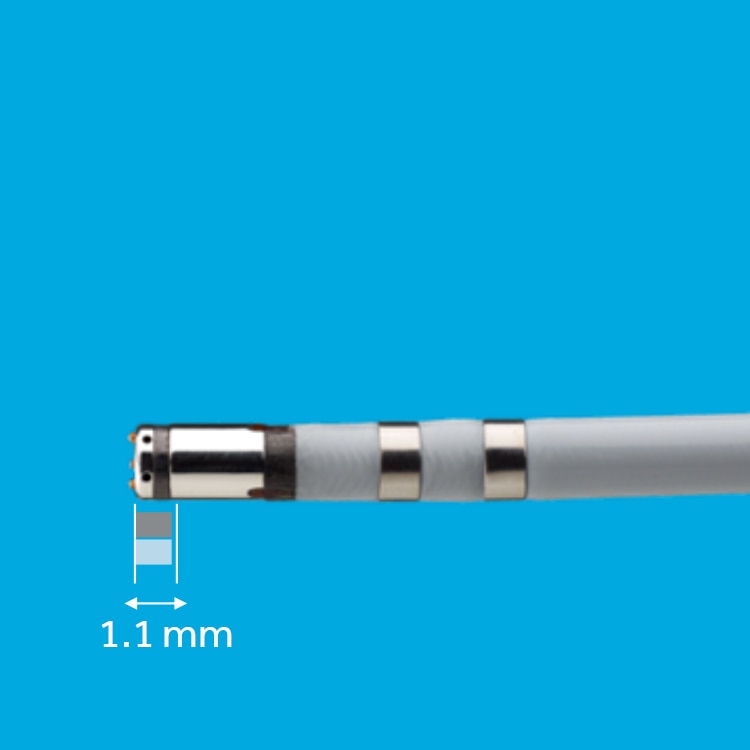
Testimonials
Watch as four experienced EPs share how the DiamondTemp™ ablation system uses direct tissue surface temperature measurement to create effective lesions.
Discover the DiamondTemp™ difference (04:05)
Specifications
The 8.0 Fr open-irrigated catheter features a 4.1 mm tip segment consisting of six externally placed temperature-sensing thermocouples, a dual composite tip electrode, two ring electrodes, and six irrigation ports.
Includes customized offerings:
- Small and large curve configurations
- Unidirectional and bidirectional models
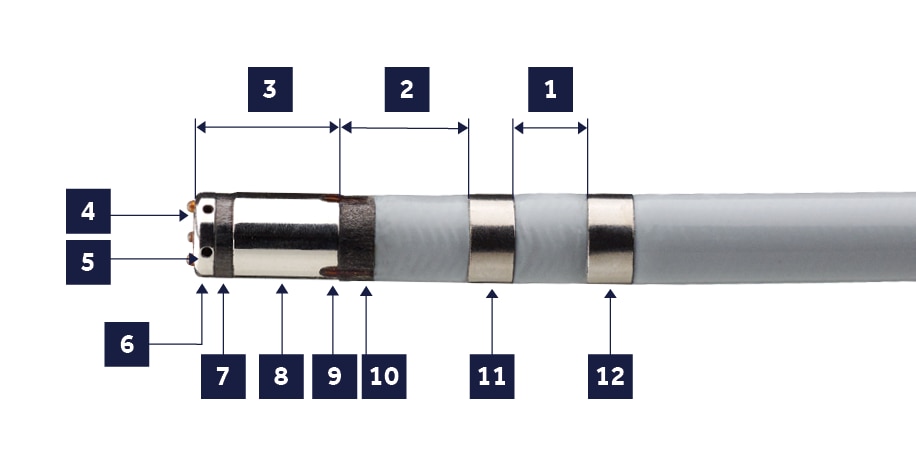
- 2.0 mm
- 3.5 mm
- 4.1 mm
- 3x distal thermocouples
- 6x irrigation ports
- Distal RF electrode — 0.6 mm
- Distal diamond — 0.5 mm
- Proximal RF electrode — 3.0 mm
- 3x proximal thermocouples
- Proximal diamond
- Distal ring electrode
- Proximal ring electrode
Ordering information
Similar products
-
 Barrx™ channel RFA endoscopic catheter
Barrx™ channel RFA endoscopic catheterThe Barrx™ channel RFA endoscopic catheter delivers radiofrequency ablation through the working channel of a flexible endoscope.
-
 RF Marinr™ 5 Fr steerable single-curve ablation catheter
RF Marinr™ 5 Fr steerable single-curve ablation catheterThe RF 5 Fr Marinr™ steerable single-curve ablation catheter is designed for small vasculature.
-
 RF Marinr™ 7 Fr steerable multi-curve ablation catheter
RF Marinr™ 7 Fr steerable multi-curve ablation catheterThe RF Marinr™ 7 Fr steerable multi-curve ablation catheter provides variable curve sizes and reach in one catheter.
- Kautzner J, Albenque JP, Natale A, et al. A novel temperature-controlled radiofrequency catheter ablation system used to treat patients with paroxysmal atrial fibrillation. JACC Clin Electrophysiol. 2021;7(3):352–363.
- DiamondTemp Ablation System Design internal test reports; DM00591-EPIX, DM00215, PS00285, 030-00FR-140.
- Brown A, Marco S. Introduction to Heat Transfer. Third edition. McGraw Hill; 1958
- Eckert ERG, Drake RM. Heat and Mass Transfer. Cited in: Holman JP. Heat Transfer. Ninth edition. McGraw Hill; 2002.
- Nath S, DiMarco JP, Haines DE. Basic aspects of radiofrequency catheter ablation. J Cardiovasc Electrophysiol. 1994;5(10):863–876.
- Verma A, Schmidt MM, Lalonde JP, Ramirez DA, Getman MK. Assessing the relationship of applied force and ablation duration on lesion size using a diamond tip catheter ablation system. Circ Arrhythm Electrophysiol. 2021;14(7):e009541.